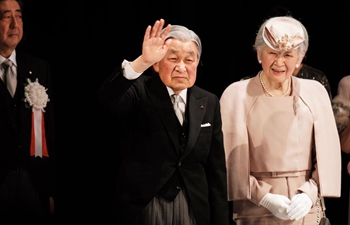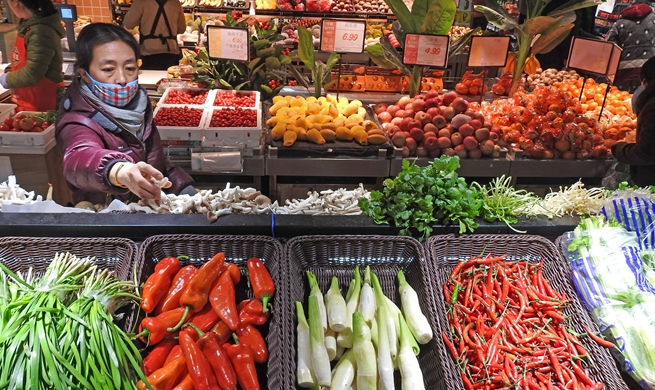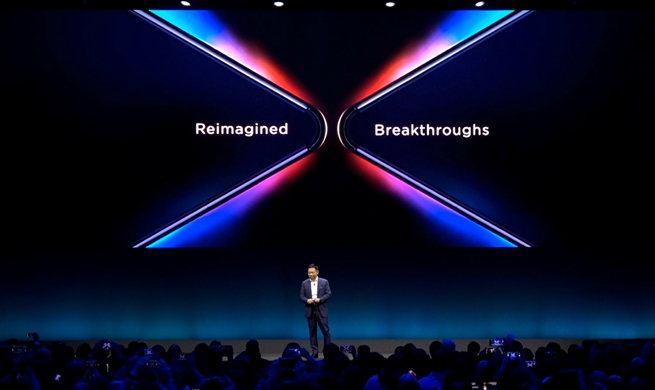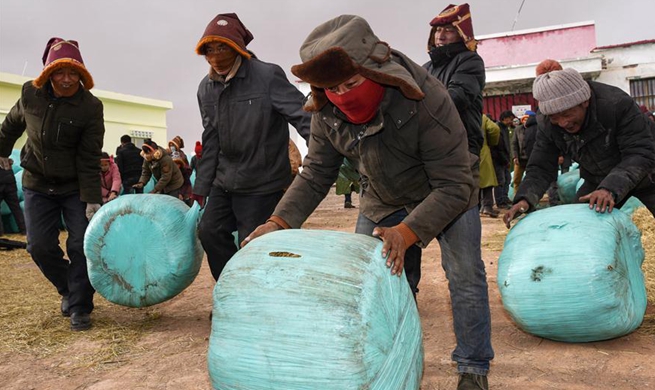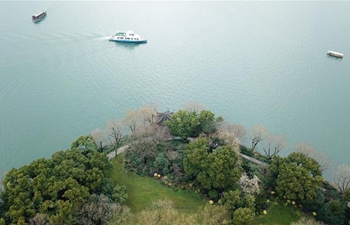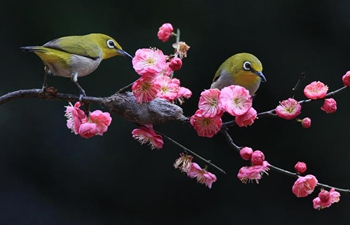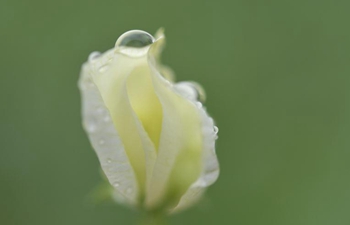NAIROBI, Feb. 25 (Xinhua) -- Draped in a white piece of cloth at the corner of Josephine Mwasia's living room in her house in Buru Buru in the east of Kenyan capital Nairobi is a huge water pot.
The brown clay pot sits at a spot where in most urban homes in Kenya, one finds a water dispenser from which members of the family draw their drinking water.
For Mwasia, however, she has stuck with the good, old and traditional pot, despite living in the city and being exposed to a myriad of water cooling technologies.
"This earthen pot has served me for close to a decade now," Mwasia, who runs a boutique in the middle-income estate, said on Monday.
"I sourced it from a women's group in western Kenya and it has never disappointed me. I think they make the best pots ever," she said.
Her family is among many in the East African nation in both urban and rural areas that have clung onto the clay pot for cooling water and cooking, offering potters mainly in western and central Kenya steady market amid modern technologies.
Mwasia has placed the pot inside a container with sand, explaining that it offers the water inside the pot a natural environment, just as it would be in the river.
"I have used a water pot all my life after learning the art of cooling water from my mother. There is a time I switched to a water dispenser but abandoned it after my two children and I got a cold from the water because it was too cold," she explained.
The earthen pot, according to her, keeps water at room temperature, making it neither hot nor cold, therefore, it can be drunk without either cooling or warming it.
"With water dispenser, one has to fetch cold or hot and cool or warm it depending on their preference. This comes with costs since the machine uses electricity and one has to buy bottled water at 400 shillings for 20 liters," said Mwasia, noting she fetches water from the tap and puts in a purifier before cooling it.
To make the pots appeal to more people, and not just diehards like Mwasia, potters in Kenya are giving them a modern look, with the latest ones having a tap to make fetching water easier, just as it with the dispenser.
With the old pots, one had to draw water from an opening at the top by dipping a cup inside, which was unhygienic.
"I cured this menace by introducing a tap on my water pots," Victoria Njeri, a potter based in Murang'a, central Kenya, said.
She has dubbed the pot "African water fridge" and sells a 15-liter capacity pot for 6 dollars. "At the top, however, the opening remains, which is used to refill the pot and clean it preferably once a week."
Meanwhile, earthen cooking pots are also still popular with families and eateries, which use them to cook foods that need lengthy boiling like a mixture of bean, maize and tripe
"The good thing with the earthen pot is that it conserves energy, therefore, the food boils faster unlike the aluminum cooking pot (sufuria)," said Mathews Omune, who runs an eatery in Komarock in eastern Nairobi.
Omune noted that he uses about an-hour-and-a-half to boil a mixture of beans and maize in a clay pot, which is about half the time one would spend when using sufuria, therefore, saving on charcoal that he buys at 30 dollars presently.
To make the pots, potters like Njeri source for clay from rivers, and mold them with the aid of metal shapes and later place them in a kiln where they burn in a temperature of over 500 degrees for up to 10 hours.
Clay water pots cut the use of electricity, while cooking pots save energy and are, therefore, environment friendly, according to Global Village Energy Partnership.
Clay pots in Kenya were first used by communities some 8,000 years ago, according to the National Museums of Kenya.





